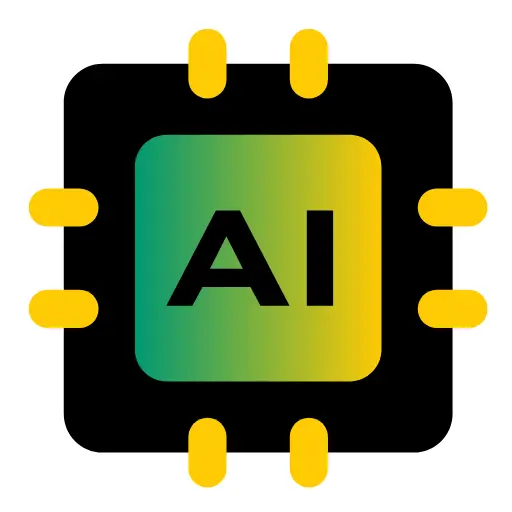In a global surge in AI model development and data center construction, Nvidia (NASDAQ: NVDA) has emerged as the undisputed titan, amassing a staggering $3 trillion market valuation. The company’s meteoric rise is fueled by its ability to deliver an end-to-end full-stack AI solution, including its signature GPUs, Grace CPUs, and proprietary networking equipment, packaged seamlessly within Nvidia-designed server racks.
However, a new era is unfolding. Nvidia has announced a groundbreaking pivot with the unveiling of NVLink Fusion, a technology that significantly opens up its ecosystem by allowing customers to integrate their own CPUs or AI chips into Nvidia’s AI infrastructure.
The Evolution of Nvidia’s AI Dominance
A Full-Stack AI Infrastructure Powerhouse
Nvidia’s traditional approach to AI infrastructure has been vertically integrated. The GB200 NVL72 server rack system, which represents Nvidia’s flagship offering, combines the computational power of Nvidia Grace CPUs with the unmatched parallel processing capabilities of Nvidia Blackwell GPUs. This combination delivers optimal performance for training and inference of large AI models, particularly LLMs (Large Language Models) and transformer-based architectures.
Such an integrated solution has driven triple-digit annual revenue growth for Nvidia, as hyperscalers, enterprises, and AI startups flock to its platform to build next-gen AI applications.
The Strategic Shift: NVLink Fusion Opens the Ecosystem
Announced by CEO Jensen Huang at the COMPUTEX trade show in Taiwan, NVLink Fusion represents a tectonic shift in Nvidia’s approach to data center architecture. As Huang emphasized, “data centers must be fundamentally rearchitected—AI is being fused into every computing platform.”
The NVLink Fusion platform will enable third-party processors—both CPUs and AI accelerators—to interconnect with Nvidia’s high-performance GPUs and networking backbone. This development unlocks new levels of interoperability and customization, attracting broader industry participation.
New AI Partnerships and Market Implications
Diverse Chip Partners Join the Revolution
With NVLink Fusion, Nvidia is partnering with a spectrum of new AI chip providers and CPU manufacturers. Initial AI chip partners include:
- MediaTek
- Marvell Technology
- AIchip
On the CPU side, Fujitsu and Qualcomm Technologies are among the first to adopt NVLink Fusion into their architectures. This move allows companies that were previously excluded from Nvidia’s closed ecosystem to integrate their custom silicon within Nvidia’s high-performance server racks.
According to Cristiano Amon, CEO of Qualcomm Technologies, “With the ability to connect our custom processors to Nvidia’s rack-scale architecture, we’re advancing our vision of high-performance, energy-efficient computing to the data center.”
Cloud Providers Reap the Benefits
Previously, cloud hyperscalers such as AWS, Microsoft Azure, and Google Cloud—many of whom build custom chips in-house—faced limitations integrating with Nvidia’s vertically integrated stacks. Now, NVLink Fusion allows these companies to mix custom silicon with Nvidia’s GPUs, providing greater hardware flexibility, cost optimization, and performance tuning.
This shift not only democratizes access to Nvidia’s AI supercomputing capabilities but also vastly expands Nvidia’s TAM (Total Addressable Market) within data centers globally.
Implications for Data Center Architecture
The Rise of Modular, Heterogeneous Computing
As AI becomes integral to every enterprise stack, modularity and heterogeneous computing are becoming central themes. NVLink Fusion makes it possible to create custom AI server configurations with components from multiple vendors, offering:
- High-bandwidth interconnects
- Synchronized compute cycles
- Improved energy efficiency
- Lower latency between processing units
By enabling CPU-GPU-AI chip synergy at rack-scale, Nvidia is pushing toward next-gen, AI-native data centers that can handle massive AI workloads without compromising performance.
The Missing Link: Broadcom’s Absence
Interestingly, one major player was notably absent from Nvidia’s initial partner list: Broadcom (NASDAQ: AVGO). Known for developing custom AI chips for several large tech firms, Broadcom’s exclusion raises questions. However, Nvidia has stated that more partners may be added in the future, signaling an open-door policy that could bring even greater interoperability and adoption.
Nvidia’s Competitive Edge in the AI Race
Scalable Performance and Proprietary Advantage
Nvidia’s GPUs continue to outperform all rivals in tasks such as deep learning model training, high-throughput inferencing, and multimodal AI applications. With NVLink Fusion, the company ensures its GPUs remain the core engine of every high-performance AI deployment—even when competitors’ CPUs or accelerators are present.
Furthermore, Nvidia’s CUDA software stack, TensorRT optimization, and AI model libraries create a software moat that complements its hardware dominance, maintaining customer lock-in and long-term loyalty.
Expanding Revenue Streams and Ecosystem Growth
By loosening hardware constraints, Nvidia can now:
- Sell more GPUs to previously restricted customers
- License NVLink architecture
- Encourage broader adoption of CUDA-compatible AI workloads
- Deepen relationships with telecoms, automakers, healthcare, and defense sectors
This ecosystem expansion could generate new high-margin revenue streams and secure Nvidia’s place at the heart of the AI infrastructure economy for the next decade.
Conclusion: The Future of AI Is Open and Nvidia-Powered
Nvidia’s introduction of NVLink Fusion marks a pivotal moment in the evolution of AI infrastructure. As data centers around the world transform to meet the computational demands of AI, Nvidia is no longer just a chipmaker—it is the core architect of the AI-powered future.
The company’s willingness to open its once-closed ecosystem signals a new wave of innovation, collaboration, and growth across the entire AI value chain. From hyperscalers to enterprise developers, everyone now has a pathway to integrate Nvidia’s high-performance GPUs into their customized data center environments.
As the AI arms race accelerates, Nvidia’s flexible yet powerful platform positions it as both the foundation and future of intelligent computing.




